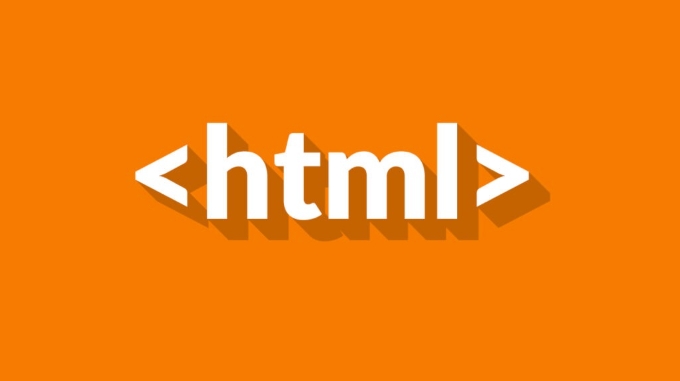HTML `rp` and `rt` for Ruby Annotations
Ruby annotations in HTML use the ruby container with rt for pronunciation and rp for parentheses. 1. The ruby tag holds the main text like a kanji character. 2. The rt tag gives its pronunciation or meaning. 3. The rp tag wraps parentheses around rt content for better display and fallback readability. Including rp improves accessibility, ensures consistency across browsers, and maintains clarity if CSS fails. Examples show how to structure annotations for single or multiple characters while preserving sentence flow. Using these tags enhances user experience, especially for language learners.

If you've ever seen small phonetic guides above or next to certain characters—especially in Japanese or Chinese websites—you're looking at ruby annotations. In HTML, the rp and rt tags work together with the ruby element to make this happen. They're not widely used, but they serve a very specific and helpful purpose, especially for language learners or multilingual content.

What ruby, rt, and rp do together
The ruby element is the container. Inside it, you place the main text (like a Chinese character or a Japanese kanji), and then use the rt element to define its pronunciation or meaning. The rp tag is used to wrap parentheses around the rt content, mostly for browsers that do support ruby but might not fully style it without extra help.
Here’s a basic example:

<ruby> 漢 <rt>かん</rt> <rp>(</rp><rt>kan</rt><rp>)</rp> </ruby>
This would show the character "漢" with "かん" (its Japanese pronunciation) above it. If the browser doesn’t display ruby correctly, the rp tags help make sure the parentheses around "kan" show up nicely.
Why rp is still useful today
You might think that since most modern browsers support ruby, rp isn't needed anymore. But it's still a good idea to include it for a few reasons:

- Accessibility: Screen readers and older devices might interpret the ruby structure differently. The parentheses help separate the annotation from the main text, making it easier to understand.
- Fallback readability: If your site’s CSS breaks or someone is using a very basic browser, the
rptags ensure the pronunciation guide doesn’t just show up out of nowhere—it’s clearly marked with parentheses. - Consistency: Some browsers automatically add parentheses, while others don’t. Using
rpgives you control over how it looks everywhere.
So even if it feels a bit old-school, including rp is a small step that improves the user experience across different devices and setups.
How to use them in practice
When writing ruby annotations, structure matters. Here’s a pattern you can follow:
- Always wrap everything in a
<ruby>tag. - Place the main character or word first.
- Add
<rt>right after for the pronunciation. - Wrap the
rtwithrptags to include parentheses.
Here's a slightly more complex example:
<ruby> 明 <rt>めい</rt> <rp>(</rp><rt>mei</rt><rp>)</rp> </ruby>
This displays "明" with "めい" on top. If the ruby display fails, it shows "(mei)" next to the character.
And if you're annotating multiple characters together, just repeat the pattern:
<ruby> 学校 <rt>がっこう</rt> <rp>(</rp><rt>gakkou</rt><rp>)</rp> </ruby>
This works well for inline annotations without breaking the flow of the sentence.
Final thoughts
Using rp and rt inside a ruby block isn't complicated, but it does make a real difference in how your content is understood—especially by language learners or readers unfamiliar with certain characters. It’s a small detail, but one that improves accessibility and clarity across platforms.
That’s basically it. Not flashy, but definitely useful when you need it.
The above is the detailed content of HTML `rp` and `rt` for Ruby Annotations. For more information, please follow other related articles on the PHP Chinese website!

Hot AI Tools

Undress AI Tool
Undress images for free

Undresser.AI Undress
AI-powered app for creating realistic nude photos

AI Clothes Remover
Online AI tool for removing clothes from photos.

Clothoff.io
AI clothes remover

Video Face Swap
Swap faces in any video effortlessly with our completely free AI face swap tool!

Hot Article

Hot Tools

Notepad++7.3.1
Easy-to-use and free code editor

SublimeText3 Chinese version
Chinese version, very easy to use

Zend Studio 13.0.1
Powerful PHP integrated development environment

Dreamweaver CS6
Visual web development tools

SublimeText3 Mac version
God-level code editing software (SublimeText3)
 The `` vs. `` in HTML
Jul 19, 2025 am 12:41 AM
The `` vs. `` in HTML
Jul 19, 2025 am 12:41 AM
It is a block-level element, used to divide large block content areas; it is an inline element, suitable for wrapping small segments of text or content fragments. The specific differences are as follows: 1. Exclusively occupy a row, width and height, inner and outer margins can be set, which are often used in layout structures such as headers, sidebars, etc.; 2. Do not wrap lines, only occupy the content width, and are used for local style control such as discoloration, bolding, etc.; 3. In terms of usage scenarios, it is suitable for the layout and structure organization of the overall area, and is used for small-scale style adjustments that do not affect the overall layout; 4. When nesting, it can contain any elements, and block-level elements should not be nested inside.
 Preloading Resources with HTML `link rel='preload'`
Jul 19, 2025 am 12:54 AM
Preloading Resources with HTML `link rel='preload'`
Jul 19, 2025 am 12:54 AM
linkrel="preload" is a technology that optimizes page loading performance and is used to load critical resources in advance. Its core purpose is to prioritize loading of resources that are critical to home screen rendering, such as fonts, key CSS/JS and home screen images. Pay attention to when using: 1. Set the as attribute correctly to specify the resource type; 2. Avoid abuse and prevent excessive bandwidth usage; 3. Ensure that the resources will be actually used, otherwise it will cause waste of requests; 4. Add crossorigin attribute to cross-domain resources. Incorrect writing method such as the lack of the as attribute will cause the preload to be invalid. Rational use can improve page loading efficiency, otherwise it may be counterproductive.
 Essential HTML Tags for Beginners
Jul 27, 2025 am 03:45 AM
Essential HTML Tags for Beginners
Jul 27, 2025 am 03:45 AM
To get started with HTML quickly, you only need to master a few basic tags to build a web skeleton. 1. The page structure is essential, and, which is the root element, contains meta information, and is the content display area. 2. Use the title. The higher the level, the smaller the number. Use tags to segment the text to avoid skipping the level. 3. The link uses tags and matches the href attributes, and the image uses tags and contains src and alt attributes. 4. The list is divided into unordered lists and ordered lists. Each entry is represented and must be nested in the list. 5. Beginners don’t have to force memorize all tags. It is more efficient to write and check them while you are writing. Master the structure, text, links, pictures and lists to create basic web pages.
 Shadow DOM Concepts and HTML Integration
Jul 24, 2025 am 01:39 AM
Shadow DOM Concepts and HTML Integration
Jul 24, 2025 am 01:39 AM
ShadowDOM is a technology used in web component technology to create isolated DOM subtrees. 1. It allows the mount of an independent DOM structure on ordinary HTML elements, with its own styles and behaviors, and does not affect the main document; 2. Created through JavaScript, such as using the attachShadow method and setting the mode to open; 3. When used in combination with HTML, it has three major features: clear structure, style isolation and content projection (slot); 4. Notes include complex debugging, style scope control, performance overhead and framework compatibility issues. In short, ShadowDOM provides native encapsulation capabilities for building reusable and non-polluting UI components.
 Can you put a tag inside another tag?
Jul 27, 2025 am 04:15 AM
Can you put a tag inside another tag?
Jul 27, 2025 am 04:15 AM
❌Youcannotnesttagsinsideanothertagbecauseit’sinvalidHTML;browsersautomaticallyclosethefirstbeforeopeningthenext,resultinginseparateparagraphs.✅Instead,useinlineelementslike,,orforstylingwithinaparagraph,orblockcontainerslikeortogroupmultipleparagraph
 HTML `style` Tag: Inline vs. Internal CSS
Jul 26, 2025 am 07:23 AM
HTML `style` Tag: Inline vs. Internal CSS
Jul 26, 2025 am 07:23 AM
The style placement method needs to be selected according to the scene. 1. Inline is suitable for temporary modification of single elements or dynamic JS control, such as the button color changes with operation; 2. Internal CSS is suitable for projects with few pages and simple structure, which is convenient for centralized management of styles, such as basic style settings of login pages; 3. Priority is given to reuse, maintenance and performance, and it is better to split external link CSS files for large projects.
 Using the HTML `download` Attribute for Links
Jul 17, 2025 am 03:57 AM
Using the HTML `download` Attribute for Links
Jul 17, 2025 am 03:57 AM
TheHTMLdownloadattributeallowsuserstodownloadfilesdirectlyfromalinkbyusingthetag.Toimplementit,adddownloadtotheanchortag,suchasDownloadPDF,orspecifyacustomfilenamelikeDownloadasmy-document.pdf.1.Itworksbestwithsame-originURLsandcommonfiletypeslikePDF
 What is the name attribute in an input tag for?
Jul 27, 2025 am 04:14 AM
What is the name attribute in an input tag for?
Jul 27, 2025 am 04:14 AM
Thenameattributeinaninputtagisusedtoidentifytheinputwhentheformissubmitted;itservesasthekeyinthekey-valuepairsenttotheserver,wheretheuser'sinputisthevalue.1.Whenaformissubmitted,thenameattributebecomesthekeyandtheinputvaluebecomesthevalueinthedatasen







